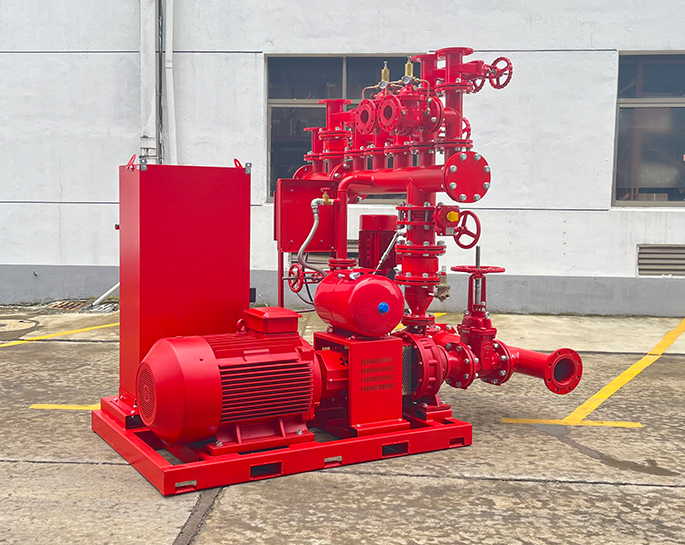Installing a fire pump is a critical aspect of a fire protection system, and it requires careful planning and adherence to safety standards. Here are some precautions to consider during fire pump installation:
Compliance with Codes and Standards:
Ensure that the installation complies with local building codes, fire codes, and relevant standards such as NFPA 20 (Standard for the Installation of Stationary Pumps for Fire Protection).
Qualified Professionals:
Engage qualified and experienced professionals for the design, installation, and commissioning of the fire pump system. This may include fire protection engineers, electrical engineers, and certified pump installers.
Site Selection:
Choose an appropriate location for the fire pump, considering factors such as accessibility, ventilation, and proximity to water sources. The pump room should be well-ventilated and free from hazards.
Proper Foundation:
Ensure that the pump is installed on a stable and properly designed foundation that can support the weight of the pump and motor, and absorb vibrations.
Alignment:
Align the pump and motor properly to prevent issues such as shaft misalignment, which can lead to premature wear and failure.
Suction Piping:
Install the suction piping correctly, avoiding sharp bends, restrictions, or air pockets that could lead to cavitation. Use proper strainers to prevent debris from entering the pump.
Discharge Piping:
Design and install the discharge piping in accordance with industry standards. Proper support and alignment of piping are essential to prevent stress on the pump and ensure efficient water flow.
Valves and Check Valves:
Install appropriate valves in the suction and discharge lines for isolation and maintenance purposes. Check valves should be used to prevent water from flowing back into the pump when it is not in operation.
Electrical Considerations:
Ensure that the electrical components, including wiring, control panels, and motor starters, are installed by qualified electricians and comply with local electrical codes.
Testing and Commissioning:
Conduct thorough testing and commissioning of the fire pump system before placing it into service. This includes flow testing, pressure testing, and checking the functionality of control systems.
Documentation:
Maintain accurate documentation, including "as-built" drawings, equipment manuals, and test records. This documentation is essential for future inspections, maintenance, and modifications.
Training:
Provide training to the building staff on the operation and maintenance of the fire pump system. This ensures that personnel are familiar with the system and can respond effectively in case of an emergency.
By following these precautions, you can help ensure the proper installation and reliable operation of a fire pump, contributing to the overall effectiveness of the fire protection system. Always consult with local authorities and experts to ensure compliance with specific regulations and standards in your region.



